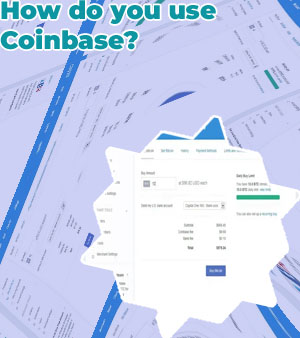Coinbase cryptocurrency
Pages Related to Coinbase
The downside to this approach is it requires you to remember your own password, also known as a private key. If you have heard reports of people losing millions because they got locked out of their cryptocurrency wallet, they probably have a non-custodial wallet. While this method is more secure, the onus is on you to ensure you can access your wallet. How to buy bitcoin on coinbase pro You can trade over 100 cryptocurrencies on Coinbase. You can also earn interest on a number of crypto coins.
Buy bitcoin gdax
A crypto exchange is, very basically, a place where you can purchase a cryptocurrency using cash or another digital asset. Ways to invest in cryptocurrency at Schwab Livestream Scam – Scammer broadcasts a livestream event through an online streaming platform (e.g., YouTube) to market a fraudulent promotion or product. Promotions typically offer questionable terms that are too good to be true and may request payment through crypto assets.Dynamics 365
Coinbase’s standard account charges a fee around 0.5% of the spread on crypto sales and purchases. The exact price is hard to determine, though, since the market changes quickly. There is also a more significant fee based on how much you purchase and what type. This may come at a fixed rate or a varying percentage. For example, if the total transaction amount equals less than or equal to $10, then the fee is $0.99. That price is then compared to the variable expense. Whichever fee is greater is applied to your transaction. Best Exchanges to Trade Leveraged Tokens Federal Reserve Chair Jerome Powell and SEC Chair Gary Gensler both have stated that they don't intend to outlaw cryptocurrencies. But in mid-2023, both the SEC and the CFTC had initiated formal charges against Binance and Coinbase, two of the largest crypto exchanges, for operating unlicensed broker dealers, exchanges, and clearing agencies, as well as violating numerous federal securities laws intended to protect investors.
Coinbase how cryptocurrency
Coinbases’ journey from GDAX to Coinbase Pro began as a platform for non-technical people to use Bitcoin. Founder and CEO Brian Armstrong recognized early on that it wasn’t easy for non-programmers to buy and sell cryptocurrencies. Prior to Coinbase, they had to download a software wallet onto their computer and operate a node on the bitcoin network. Coinbase Staking occurs when investors lock their crypto assets for a set period to help support the operation of blockchain transaction validations. In return, the investor is promised more cryptocurrency. Under Coinbase’s staking offerings, investors deposit crypto assets with Coinbase, which then facilitates the staking of those assets on a particular blockchain. The program is offered to the general public and Coinbase advertises a return of up to 10% on investments. Coinbase pools investors’ crypto assets and employs a team of engineers to operate staking validator nodes, or contracts with third-party validators, to generate staking rewards. Coinbase takes a cut of those profits before sharing them with investors.Previous Posts - Twitter: @Bitcoindia

